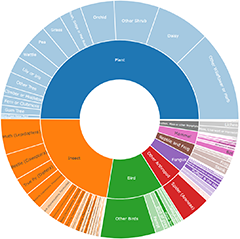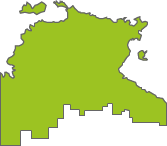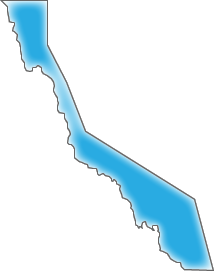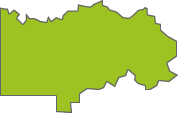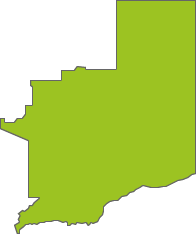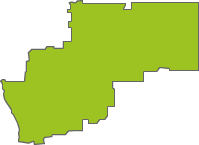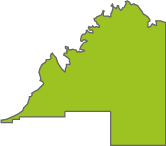Announcements
23 Apr 2025
We are super proud to welcome Edgar McNamara @edgarmcnamara to the team!Edgar joins NatureMapr as Junior Platform Engineer and will play a critical role in supporting the platform and our valued custo...
Continue reading
Platform wide attribute changes
New Feature: Moderator Quick Responses!
New priority species lists in the ACT
NatureMapr now receives more records in NSW than ACT
Discussion
WendyEM
wrote:
19 min ago
from (thanks to https://lepidoptera.butterflyhouse.com.au/pyra/poeodes.html)
A. Jefferis Turner, A preliminary revision of the Australian Thyrididae and Pyralidae. II,
Proceedings of the Royal Society of Queensland, Volume 19 (1905), p. 54.
poeodes = grass green description of a male "Head and palpi greenish-grey. Antennae whitish. Thorax green. Abdomen whitish. Legs whitish irrotated and annulated with fuscous. Forewings elongate-triangular, costa gently arched, apex rounded, termen rounded, oblique; bright green with a very few fuscous scales; an irregularly shaped dark-fuscous discal spot at 1/2; a series of dark-fuscous dots on apical third of costa continued round apex sinuate; whitish-grey; cilia whitish. Hindwings with termen sinuate; whitish-grey; cilia-whitish."
A. Jefferis Turner, A preliminary revision of the Australian Thyrididae and Pyralidae. II,
Proceedings of the Royal Society of Queensland, Volume 19 (1905), p. 54.
poeodes = grass green description of a male "Head and palpi greenish-grey. Antennae whitish. Thorax green. Abdomen whitish. Legs whitish irrotated and annulated with fuscous. Forewings elongate-triangular, costa gently arched, apex rounded, termen rounded, oblique; bright green with a very few fuscous scales; an irregularly shaped dark-fuscous discal spot at 1/2; a series of dark-fuscous dots on apical third of costa continued round apex sinuate; whitish-grey; cilia whitish. Hindwings with termen sinuate; whitish-grey; cilia-whitish."
Heteromicta pachytera
WendyEM
wrote:
47 min ago
Heteromicta poeodes -
green colours fade to straw in older museum specimens
https://bold-au.hobern.net/specimen.php?processid=ANICQ301-11
https://bold-au.hobern.net/specimens.php?taxid=254838
https://bie.ala.org.au/species/https://biodiversity.org.au/afd/taxa/8ea09b36-8cea-41b4-a277-0bb798ce3acf#names
https://inaturalist.ala.org.au/observations?verifiable=true&taxon_id=781656&place_id=6744&preferred_place_id=6744
I note the above image is on iNat but not yet verified, this is probably just a volunteer resources issue (as with all of these citizen science sites)
green colours fade to straw in older museum specimens
https://bold-au.hobern.net/specimen.php?processid=ANICQ301-11
https://bold-au.hobern.net/specimens.php?taxid=254838
https://bie.ala.org.au/species/https://biodiversity.org.au/afd/taxa/8ea09b36-8cea-41b4-a277-0bb798ce3acf#names
https://inaturalist.ala.org.au/observations?verifiable=true&taxon_id=781656&place_id=6744&preferred_place_id=6744
I note the above image is on iNat but not yet verified, this is probably just a volunteer resources issue (as with all of these citizen science sites)
Heteromicta pachytera
Mike
wrote:
54 min ago
Blackbirds (Turdus merula) do much the same digging in my garden. Galahs and cockatoos usually work in groups so dig wider areas in nature reserves.
Sus scrofa
DonFletcher
wrote:
1 hr ago
Hi @teeniiee, Sorry I can't verify this as pig on current evidence.
Remember that what I see (one or more small photos) is much different than what you experience. You can look at it in much better detail from different angles and tell with accuracy how deep it is etc, none of which is possible from these photos. From where I sit, it looks more like something a bird could produce, not the usual pig ripping which is typically quite a lot deeper and stronger. This looks like it could be cockatoo digging, or light scratching by other birds, or by humans.
Remember that what I see (one or more small photos) is much different than what you experience. You can look at it in much better detail from different angles and tell with accuracy how deep it is etc, none of which is possible from these photos. From where I sit, it looks more like something a bird could produce, not the usual pig ripping which is typically quite a lot deeper and stronger. This looks like it could be cockatoo digging, or light scratching by other birds, or by humans.
Sus scrofa
Significant sightings
- Berberis vulgaris at Campbell, ACT
- Asparagus asparagoides at Ainslie, ACT
- Arundo donax at Campbell, ACT
- Proteuxoa sp. 3 (MoV, Part 9)
- Androchela newmannaria at Crowther, NSW
- Tinocallis ulmiparvifoliae at Melba, ACT
- Dysphania glomulifera subsp. glomulifera at Anglers Reach, NSW
- Walwhalleya subxerophila at Franklin, ACT
- Plectorhyncha lanceolata at Higgins, ACT
- Sceptridium australe at Wyanbene, NSW
Recent activity
Top contributors
- AlisonMilton 16K
- trevorpreston 15.5K
- Hejor1 12.5K
- Tapirlord 11.4K
- MichaelBedingfield 10.7K
- RodDeb 10.2K
- Mike 9.8K
- kasiaaus 9.5K
- ConBoekel 8.6K
- KylieWaldon 8.1K
Top moderators
- MichaelMulvaney 55.3K
- Tapirlord 38.7K
- MichaelBedingfield 21.9K
- Liam.m 19.3K
- donhe 17.3K
- natureguy 15.6K
- ibaird 14.7K
- AlisonMilton 10.7K
- MatthewFrawley 10.1K
- BettyDonWood 8.2K
Explore Australia by region
Australian Capital Territory
Canberra & Southern TablelandsNew South Wales
Southern HighlandsAlbury, Wodonga
Canberra & Southern Tablelands
South Coast
Greater Sydney
Hunter Region
Central West NSW
Riverina Murray
New England
Far West New South Wales
New South Wales North Coast
Northern Territory
Top End and Big RiversCentral and Barkley










































































































![Unverified Cap on a stem; gills below cap [mushrooms or mushroom-like] at Fern Tree, TAS - Yesterday by VanessaC Unverified Cap on a stem; gills below cap [mushrooms or mushroom-like] at Fern Tree, TAS - Yesterday by VanessaC](https://api.naturemapr.org/api/sightings/4664420/images/1?width=300&height=300)


![Unverified Cap on a stem; gills below cap [mushrooms or mushroom-like] at Fern Tree, TAS - Yesterday by VanessaC Unverified Cap on a stem; gills below cap [mushrooms or mushroom-like] at Fern Tree, TAS - Yesterday by VanessaC](https://api.naturemapr.org/api/sightings/4664415/images/1?width=300&height=300)
